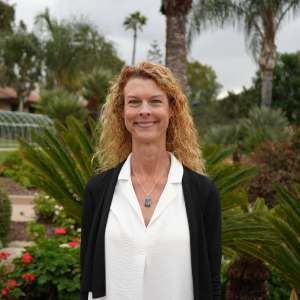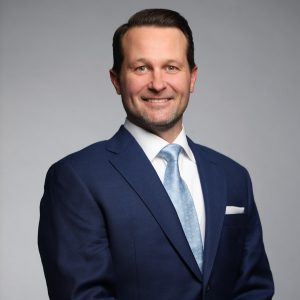Burnout in Senior Care: How to Identify, Address, and Prevent It
Burnout can affect professionals in any field, but the senior care industry presents unique challenges that can accelerate its onset. When staff experience burnout, their performance may decline, or they may leave the workforce entirely, creating staffing shortages and increasing the burden on remaining employees. Proactively identifying and addressing early signs of burnout is essential to supporting employee well-being and maintaining high-quality care for residents.
Read on to learn how to identify and prevent burnout in your senior care workforce and strategies to support staff members affected by it.
Common Causes of Staff Burnout in Senior Care

Kim Keane, director of program development for Noah Homes
Emotional strain is a leading cause of staff burnout, explains Kim Keane, director of program development for Noah Homes, which advocates for and houses 90 adults with intellectual disabilities and is also the site of California’s first dementia care homes for adults with developmental disabilities experiencing memory loss and cognitive issues. For example, the loss of a resident a staff member has cared for, the need to emotionally support visiting family members, and feeling like being an unseen or undervalued advocate for residents can all take an emotional toll.
Lack of training in a specific area, such as caring for someone with memory loss, can also lead to staff burnout. “Memory loss, in particular, calls on the caregiver to accept the alternate reality that the person they are caring for is living in, and that’s hard to do,” Deane says. “Working with individuals experiencing memory loss requires the caregiver to adjust their communication style. For example, a caregiver can kneel to meet the person eye to eye and use body language and tone to communicate. If you aren’t aware of these modifications, you can feel entirely defeated and stuck in a cycle of frustrating interactions.”

Sarah Milanowski, L.M.S.W., manager of enrollment and marketing at LifeCircles PACE
The effects of the pandemic also continue to impact the senior care workforce. “While many stayed home during lockdowns, caregivers remained on the front lines, providing essential support to older adults who were at high risk of isolation and declining health,” says Sarah Milanowski, L.M.S.W., manager of enrollment and marketing at LifeCircles PACE, which provides support to seniors and caregivers with all-inclusive services, including support in homes and at the program’s day centers. “This period was not only physically demanding but also emotionally overwhelming, and the lingering effects are still being felt nearly five years later.”
The staffing shortage and the fact that many caregivers left the field during the pandemic has created a cap that has yet to be fully filled. As a result, caregivers often take on additional responsibilities, which can add stress.
How to Identify Signs of Staff Burnout
Milanowski encourages senior care communities to foster open communication and build genuine connections among team members, which can help identify burnout. “When staff feel comfortable expressing concerns and emotions, it becomes easier to identify when someone may need additional support,” she says.
Milanowski identifies the following signs of staff burnout:
- Physical and emotional fatigue, including seeming tired, drained, or disengaged
- Irritability or mood changes, such as increased frustration, impatience, or emotional withdrawal
- Lack of motivation or enthusiasm
- Changes in performance, such as increased mistakes or forgetfulness
“To help mitigate these challenges, we prioritize staff well-being,” says Milanowski. “Our strong staffing ratios ensure caregivers can take meaningful time off without guilt or excessive workload.” LifeCircles also has a generous PTO policy, so staff can earn and take time off, and managers encourage staff to use their PTO to rest and recharge.
How to Support Staff Experiencing Burnout
When staff show signs of burnout, Keane provides coaching to help them recognize that prioritizing their own well-being enables them to provide better care for others. “We reassure them that it is normal to experience a wide range of emotions, from elation to grief, especially when supporting those with memory loss,” she says. “We encourage them to leave the building, take a brisk walk, eat well, and connect with others to maintain their health and well-being.”
Milanowski says listening is the most important first step when a staff member experiences burnout. “Every team member’s experience is unique, and taking the time to understand their challenges allows leadership to provide meaningful support,” she says. “One-on-one conversations can help identify practical solutions—whether that means adjusting schedules, redistributing responsibilities, or offering additional resources.”
Last Thoughts on Preventing Burnout
Internal support and external advocacy are key to preventing staff burnout. “Within our organization, we create an environment where caregivers feel valued, heard, and supported,” says Milanowski. “Externally, we actively advocate for systemic changes that benefit caregivers, including enhanced benefits, competitive wages, and increased funding for at-home senior care.”
LifeCircles also recognizes and celebrates its caregivers, including through small, personal ways and in larger, community-focused events. “Whether it’s acknowledging individual contributions, celebrating milestones, or simply expressing daily appreciation, we are intentional in recognizing the hard work of our team,” Milanowski explains.
“At the end of the day, preventing burnout is about making sure our caregivers feel supported—both in their work and in their overall well-being,” she adds. “By prioritizing strong communication, manageable workloads, and a team-based approach, we create a workplace where staff can focus on what they do best: providing compassionate, high-quality care.”

Paige Cerulli is a contributing writer to i Advance Senior Care.
Related Articles
Topics: Facility management , Featured Articles , Leadership , Operations , Risk Management , Staffing










